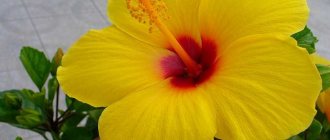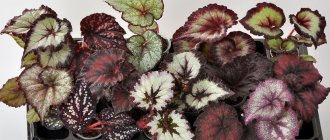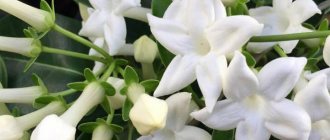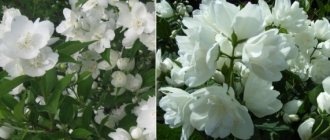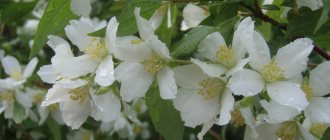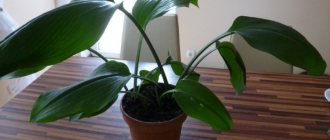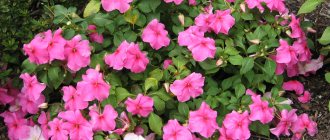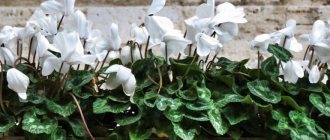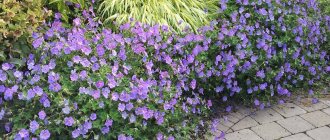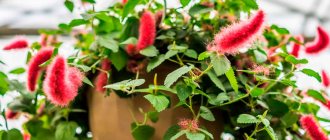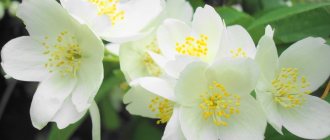Author: Elena N. https://floristics.info/ru/index.php?option=com_contact&view=contact&id=19 Category: Garden plants Published: February 12, 2018Last edits: January 20, 2021
- Growing conditions
- Hollow poppy (Papaver nudicaule)
- Beneficial features
plant (lat. Papaver) belongs to the genus of herbaceous plants of the Poppy family, which has more than a hundred species originating from Australia, Central and Southern Europe and Asia. Representatives of the genus are found in areas with subtropical, temperate and even cold climates. They grow in arid places - steppes, deserts and semi-deserts, on dry and rocky slopes. In culture, the poppy flower is grown not only as an ornamental, but also as a medicinal plant. In some countries, the cultivation of poppy is prohibited due to the fact that many of its species contain a narcotic substance, while other countries grow poppy on an industrial scale for the same reason: opium is obtained from its unripe pods, which is a raw material for the production of sleeping pills and painkillers. The poppy was known as a medicinal plant in Ancient Rome: the hypnotic effect of opium was already studied then. They write that the scientific name of poppy was derived from the Latin word papa, which means father: allegedly, in order to calm crying children, poppy seeds were added to their food. In the Middle Ages, in the Muslim countries of Asia Minor, where drinking alcohol was prohibited, people indulged in smoking opium. Gradually, this vicious tradition spread further to the east, and China became the largest consumer of opium. In 1820, the government of this country banned the import of intoxicating poison, but, having lost in the “opium” war to England, which received huge profits from the supply of this product, it was forced to allow the import of opium again. Today, sleeping pills are grown in China, India, Afghanistan, Central and Asia Minor. And decorative poppy and its hybrids have gained enormous popularity in garden culture. Poppy in a flower bed, rock garden or mixborder is a fairly common occurrence, especially since even a child can plant poppies and care for them.
Variety "Kerlilock"
With slightly drooping flowers and a thin stem, this poppy resembles a sad piece of nature. Its traditionally orange (there are also red, yellow and even pink) petals with black spots closer to the base look incredibly touching.
List of places where there are poppy fields in Crimea
Not so long ago, fiery scarlet meadows were everywhere. But recently they began to be destroyed. This is due to the opinion about the intoxicating properties of flowers. However, there are still quite a few places to visit in the republic. They are mainly concentrated in the Bakhchisarai region. You can come here to be guaranteed to see the splendor and luxury of flowering plants. The site located near the village of Tankovoe is especially popular. You can get to the place by personal transport or bus from the district center. It is located just 14 km from the settlement, famous for its fiery meadows. Tourists call the following poppy fields in Crimea the most beautiful areas:
- Near the village of Red Poppy. There is only one field here, but it is a little-known place; there are practically no people here. The settlement belongs to the Bakhchisaray district. It is better to drive to the point from the capital of the republic, and upon arrival, purchase a ticket for a regular bus at the bus station or order a taxi.
- Along the highway from Chongar to Dzhonkoy. Flowers grow right next to the road. Tourists walking freely stop and take memorable photographs. Sightseeing buses also provide an opportunity for their passengers to enjoy the beauty.
- In Kazantip. The cape is considered an ecologically clean place. It is under the protection of UNESCO. The cape is of particular interest to tourists in May. At this time, poppy fields bloom here. You can get to Kazantip from Simferopol. Regular buses depart from the bus stations. In addition, you will be able to leave Shchelkino. There are also daily flights from here. For those who are accustomed to comfort, it is better to use the services of taxi drivers.
- Not far from Koktebel and Sudak. Regular buses travel here from Simferopol twice a day. But when planning a visit, it is worth remembering that they will not take you directly to your destination. You will have to take a taxi to get to the poppy fields.
- On Donuzlav. Located in the west of the republic. This is a lake that is conveniently accessible from Evpatoria. The city is located just 28 km. And from here you go to the settlements of Mirnoye or Novoozernoye.
- At the training grounds between Kerch and Feodosia. The most convenient way to go is by personal transport. You can get to Kerch or Feodosia by regular buses from any bus station. But then you will have to use a taxi or rent a car.
- Turgenevka village. Located in the Bakhchisarai region. First of all, you need to get to the regional center. Regular buses depart from here almost every hour. Getting to the village is not difficult.
No one forbids visiting wild fields with Papáver rhoéas. You can even go into the fiery cloud and touch the natural miracle with your hands. We do not recommend tearing bouquets. Poppies are fragile flowers and will drop their bloody petals within an hour. Nature walks are absolutely free. No one will take money for visiting the field. You can enjoy the splendor of Crimean spring meadows as much as you want. Those who want to collect seeds and grow plants in their own area should come later, when the heads are fully ripe. This happens towards the end of summer. It should be noted that the location of the flame fields is not constant. Flowers are considered weeds. If you managed to find a clearing with a self-seeding grass in the spring, this does not mean that it will remain in the same place next year. Flowering spots disappear either due to mowing or due to natural inexplicable laws. Important! It is impossible to find fields of interest using public transport. You'll have to walk all day. Use your own vehicle for the trip or rent a car upon arrival.
Variety "Princess Alexandra and the Little Dancer"
These varieties, like their names, are incredibly delicate and light. Having a pink flower and the finest petals, their diameter does not exceed 15 cm, and they bloom in the very middle of summer. The varieties Ruffled Patty, Miss Piggy and Patty's Plum also boast lilac color
Landing
All types of poppy reproduce well by seeds. Only perennial poppy species can be propagated vegetatively, and this should be done infrequently, since poppies do not tolerate transplantation and transportation well. Therefore, it is recommended to transplant poppies in close proximity to the growing site.
Poppies reproduce well by seeds
The seedling method of growing poppies is practically not used; it is used when cultivating the plant indoors or growing it in short summer conditions.
Place of cultivation
All types of poppy are light-loving plants and should be grown exclusively in sunny areas. Exceptions are some perennial species, for the cultivation of which the use of partial shade is permissible.
Poppies love the sun very much
Poppy can also withstand wind, but in unprotected areas strong air movements can cause the petals to fall off, which leads to a reduction in the duration of flowering several times. That is why it is advisable to protect the poppy from cold northern winds. The ideal place for growing the plant is the southern slopes of areas with protection from winds from the north and east. Both vegetable hedges and various buildings or landscape elements can be used as protection.
Soil requirements
Poppy grows well in any soil, but prefers dry and light soils. It is advisable to plant poppy in an already cultivated area, where some cereal or annual flower crop with a late flowering time will grow along with it.
Flowerbed with poppies and cornflowers
The growing season even for perennial poppies is about three months , after which its leaves wither and only ripening fruit pods will stick out in the bare area.
Therefore, it is necessary that at the end of the poppy flowering period, some plant covers with its foliage the unpleasant empty spaces left by it. Or, in place of the poppy, you can plant some annual colored crop.
Therefore, the choice of soil for annual poppy is determined not so much by the plant itself, but by its possible “follower”. Such followers can be, for example, delphiniums, cornflowers or asters.
Sowing perennial poppies
Biennial and perennial poppies are planted in the same way. Moreover, their planting can be done either in early spring or late autumn.
Planting before winter is more popular, since the plant material obtained in this case is stronger and more resilient. “Winter” poppies have a faster development rate and earlier flowering.
Poppy seeds
Spring sowing requires more careful and intensive care for young plants , as they will face hot weather and possible droughts. This is not a problem for adult plants, but young ones will require additional watering and fertilizing.
Sometimes for biennial and perennial varieties, spring planting is done in seedling beds. When the first or second leaves appear, they are picked and transplanted to a permanent place. This planting method is relevant for cold climates or for growing poppies for a certain period. In most cases, such plants are planted immediately at the place of cultivation.
poppy seedlings
Planting before winter should occur as late as possible, since even in cold soil the seeds are capable of rapid germination, and they may have time to hatch before the start of winter. Even a temperature of +3-5°C is not an obstacle to this. Poppy must be sown before winter, when the top layer of soil has time to freeze. Basically, this time occurs in the 1-2 decades of November.
Planting in the spring is carried out as soon as weather conditions allow (complete removal of snow from the site and warming up of the top layer of soil is sufficient).
Regardless of the timing of sowing seeds, the technique of sowing them remains unchanged. It is as follows:
- The soil is prepared in advance before planting . To do this, the soil is dug up to the depth of one spade bayonet, loosened and cleared of weeds and plant matter - rhizomes and remains of stems. After which it is necessary to add some organic fertilizer (for example, a solution of mullein in water in a concentration of 1 to 10 in an amount of 10 kg per 1 sq. m) and a complex of mineral fertilizers (any complex fertilizer in an amount of 50-60 g per sq. m) . You can do without fertilizing, but the flowering will be almost half as intense.
- At the planting site, shallow furrows should be carefully made at a distance of 20 cm from each other . Their depth should not exceed 3 cm. Moreover, when planting in the spring, you can not make furrows at all, but sow on the surface.
- The seeds are placed at a sufficiently large distance from each other (from 5 to 15 cm) so that the plants are not thinned out. The germination rate of perennial poppy seeds is almost 100%, so they are placed one at a time. If you sow more densely, the plants will have to be thinned out twice (at the beginning to a distance of 10 cm between the bushes, and then to 20 cm). In addition, the empty spaces where the seeds did not germinate can be filled in next year.
- Winter crops are covered with a layer of soil about 1 cm thick. They should not be buried or the furrows should be completely covered. After which watering is carried out. Spring sowing is “symbolically” sprinkled with soil on top, watered and covered with film to speed up germination. It is advisable to water with a watering can with a very fine divider or even with a spray bottle to prevent the seeds from being washed out.
- After watering spring planting, constant soil moisture should be maintained for 10-15 days and seed germination should be monitored. As soon as the first shoots appear, the film must be removed.
Seeds planted in the fall will begin to germinate as soon as the soil to a depth of 3 cm warms up to a temperature of +3-5°C. After about 2-3 weeks, all the seeds will sprout.
Self-seeded poppy a month after planting
Young poppies are highly frost-resistant . Only in some cases is it permissible to use additional protection for spring crops (during prolonged spring frosts below -5°C). As such protection, you can use some non-woven materials.
Sowing annual plants
Similar to perennial poppies, annual poppies can be planted either before winter or in early spring.
Planting in spring is limited by two factors: the time of snow melting with warming of the top layer of soil and weather conditions. Typically, it is produced in mid-March for southern regions or from April to May for colder climates.
Sowing annual plants is similar to sowing perennials
The planting method also repeats all stages of planting perennial plants . The main thing in this process is not to deepen the seeds too much. The only difference is that the planting is done more densely - the distance between the seeds in a row is about 5 cm, and the seeds themselves are planted in groups of 2-4 pieces.
Thickened sowings are necessary to ensure that the area is filled with plants, since perennials, in the absence of germination of individual seeds, can be adjusted and reseeded year after year, but for annual plants there will be no such chance.
After the emergence of seedlings, the plants are thinned out : only the largest ones remain at a distance of 15-20 cm from each other.
Variety "Diamond"
This is a bright representative of the group of red poppies, so named because it is truly a collective image of a flower that has formed in the world over many millennia. Among those with a red and scarlet hue, the varieties Marcus Perry, King Kong, Turkenlouise and others also stand out.
The legend of the poppy flower
There are different legends in the world, for example, one of them tells how the wild (decorative) poppy flower appeared. When the Lord finished creating the earth, everyone except the night was happy. Nobody loved her because all the beauty of the world was hidden in her darkness. To correct this, the Lord created a dream, which, having made friends with the night, became a welcome guest among all living beings on the planet.
Over time, people's passions began to awaken and they began to do bad things. Sleep could not stop this and in anger stuck his magic rod into the ground, into which the night breathed life. After the roots and greenery appeared, the rod, retaining the power of sleep, turned into a beautiful plant, which was called the “poppy flower.” Then they began to use it to prepare a sleeping potion.
Opium poppy (Papaver somniferun)
It is also called “soporific poppy” and is not visible in reality, since it is also prohibited for cultivation. It blooms profusely and incredibly spectacularly in June – July. In the early morning the flowers open, and at sunset they fall. Such an everyday process resembles smooth breathing or a plastic sketch of the constant movement of a stem and flower, shown in rapid motion. You can watch this process for hours.
Advantages, legality of its cultivation
Unlike red garden poppy, papavers do not contain narcotic substances, and therefore planting them in large quantities is not punishable by law.
The culture has a number of advantages that have made it so popular among gardeners:
- ease of care;
- easy disembarkation;
- the presence of mineral elements and vitamins in its composition, which makes it useful for humans.
Based on the buds and leaves of the plant, decoctions and tinctures are prepared, which are used in folk medicine as a mild hypnotic and analgesic.
Variety "Black Cloud"
A blue-black or dark purple flower on a silver-green stem, with leaves shimmering under the moon - this is how you can see this variety of poppy.
Use in cosmetology
Red flower seeds are also beneficial for skin health. Thanks to linoleic acid, this product is important for the treatment of eczema, itching, burning and inflammation of the skin. To do this, use poppy seeds, previously soaked in milk or water and ground into a paste. To enhance the healing effect, some add lime juice. This product moisturizes well, smoothes the skin, and makes it soft. By mixing poppy seeds with cottage cheese, you can prepare an excellent facial scrub.
These small grains are also useful for hair. In particular, for getting rid of dandruff, treating split ends and thinning hair. A mixture of cottage cheese, soaked seeds and white pepper, applied to the scalp and left for half an hour, will help against dandruff. A mixture of poppy seeds and coconut water (the seeds are infused in it) is a means of stimulating hair growth.
Variety "Danish flag"
Already from the name it is clear that the variety got its name from its resemblance to the flag of Denmark - on the red canvas of the petals you can see a white and cream cross, which in the wind, as if a flag is developing, showing sharp corners and slightly jagged edges.
Poppy in folk medicine
At different times, different peoples used poppy as an analgesic, analgesic, antitussive, stimulant, astringent, bactericidal, carminative, sedative, expectorant, hemostatic, hypotensive, diaphoretic and tonic. This plant was remembered when treating asthma, bladder diseases, bruises, snake bites, dysentery, diarrhea, malaria, rheumatism, toothache, polyps and warts.
They say that if you boil the poppy plant in oil, you will get a remedy that was used to treat the liver in ancient times. A tincture of flowers was used to get rid of ulcers in the mouth. The seeds were also used against helminths, and steamed leaves or green poppy heads were applied to sore joints.
The ancient Egyptians believed that opium made people more talkative and hardworking. They believed that a poppy potion taken in the evening would give pleasant dreams. The Lebanese used opium more reservedly. They treated them for toothache, headaches, boils, coughs, dysentery and itching, and also gave this substance to overly aggressive people. In Algeria, poppy was also used to treat teeth, and in Iran, a remedy made from poppy seeds stopped bleeding. In Ayurveda, poppy is an aphrodisiac, a bowel medicine, and a skin rejuvenator. In medicine, Unani poppy was used for anemia, chest pain, dysentery, and typhus. But they used this plant with extreme caution, as they were aware of its narcotic properties.
Researchers suggest that Roman soldiers gave green poppy juice mixed with sour wine to prisoners nailed to the cross. This substance put those sentenced to death into a deep sleep, during which they became insensitive to pain.
For the Slavs, poppy was a respected ritual food. The red flower of this plant symbolized beauty, and in mythology it was a symbol of procreation. The ancients also believed in the magical power of poppy seeds, which were supposed to protect against any evil. Therefore, poppy seeds were added to kutia, Easter cakes, and wedding pies. The love of our ancestors for this culture was preserved in the traditions of celebrating the Maccabee, Christmas and many other holidays.
Variety "Merry Family"
For those who lack imagination, it is quite difficult to imagine a flower whose petals and its seed pod resemble a hen with chicks. However, this is exactly what this variety looks like. Due to their amazing color, such flowers are often used in making winter arrangements or even bouquets.
Diseases and pests
Leaf infection with powdery mildew
The main problem for poppies is fungal diseases. The most common fungal diseases of poppies are powdery mildew, downy mildew and fusarium.
With powdery mildew, the leaves become covered with a white coating, similar to a cobweb. After it disappears, you can notice the bodies of the fungi in the form of black small spots. Powdery mildew significantly inhibits plant growth and prevents the formation of flowers and fruits.
Poppy sneaker
The fight against it is carried out by spraying poppy leaves with solutions of the following compositions: 40 g of copper chloroxide in 10 liters of water or 50 g of soda in 10 liters of water.
With peronosporosis, the leaves become covered with spots of a red-brown hue and are significantly deformed. In addition, curvature of the stems and peduncles occurs. At the next stage of infection, fungal bodies appear on the leaves in the form of purple spots. At the same time, the plant’s growth slows down, and the size of flowers and fruit pods decreases significantly.
Countering downy mildew is carried out similarly to combating powdery mildew.
Fusarium is the most unpleasant poppy disease. With it, the leaves turn black, and the entire bush begins to dry out, since the entire vascular system of the plant is affected. It is impossible to cure this disease, so the infected plant must be immediately removed and destroyed, and the place where it grew should be treated with some kind of fungicide.
There are relatively few pests that can attack poppy. Most often, plants are attacked by weevils or poppy secretive proboscis. Both pests in adult form damage the root system of the plant, and the larvae of the secretive proboscis also feed on its leaves.
Poppy sneaker
Pest control consists of preventive treatment of the soil before planting with Bazudin or Chlorophos. Application rates are usually indicated on the packaging of the drugs. If pests are found on plants, they should be treated three times with Chlorophos solution. The break between treatments is 10 days. When processing, do not allow the insecticide to come into contact with poppy flowers and fruits.
Conclusion
Poppies are unpretentious and beautiful flowers that can enliven any garden. They look great both as a monoplant in flower beds and in a group with other plants. The agricultural technology of poppies is very simple and even novice gardeners can grow them.
Peony varieties
Yellow, black or white cloud, Zverg Rosenrot or Tsartrosa are all names of varieties of opium poppy. Each of them is beautiful in a special way, because it has its own, pure and rich color scheme.
What does a perennial decorative poppy look like?
Poppy flowers resemble bright flashes of fire
Poppy is a plant with large, straight shoots (hairy and bare), pinnately dissected and whole foliage, and a tap-type root system. The leaves have a small hairy-bristly edge. The flowers are regular in shape, with many thin stamens located on oblong peduncles.
Flower buds are usually solitary, but in very rare cases they can be collected in paniculate-type inflorescences. The petals, in most cases, are colored orange, pink, white, red, yellow. The club-shaped fruits contain many seeds. At the end of the ripening period, the seed capsule opens and the seeds scatter in different directions, far from the flower.
Note! The germination period of collected seeds is 4 years.
Which family does it belong to?
Ornamental perennial poppies (genus Papaver) belong to the Poppy family. The plant's homeland is considered to be Southern and Central Europe, Asia and Australia. In the wild, field poppy takes root well in places with cold, subtropical and temperate climates. Gardeners look at it not only as a decoration for the estate, but also as a medicinal plant.
Briefly about the history of appearance
The first mentions of poppy are found in the history of Ancient Greece. The ancient Romans, Babylonians and Egyptians considered it a garden flower and grew it as a remedy for evil spirits and a symbol of fertility. The seeds of the plant were used as a sleeping pill, and the petals were filled into brides' shoes and used for fortune telling. A description of this culture is found in ancient treatises dedicated to the Persian Paradise and the biblical Eden.
Plant characteristics
Blooming decorative poppies
The flowering period begins in April, May or June. The fruits of some crops ripen in July, some varieties bear fruit in August. The large flowers of decorative poppies contain large quantities of pollen. Another sign of decorativeness is the rapid shedding of petals. Opening early in the morning, they fall off in the evening.
The faded flower forms an elongated capsule with jagged edges and many small seeds inside. If the owner’s plans include collecting seeds, the boxes are not touched and left to ripen.
Important! The rhizome of an adult plant grows quite deeply and tenaciously into the ground, so mature crops do not tolerate transplantation to a new place. To avoid damaging the root, many gardeners grow poppies in a permanent place for several years.
Decorative poppy seeds are very small and for this reason they are sown after first mixing them with river sand in a ratio of 1:5. This trick is rarely justified and the hatched seeds have to be thinned out. The distance between seedlings should be at least 5 cm. When thinning poppies a second time, gardeners increase the distance to 20–25 cm. Ignoring this stage leads to plants growing too long and frail.
The petals of the plant are rich in vegetable fats (no more than 44%), organic acids, glycosides and flavonoids.
Benefits and harms
Doctors who lived almost 4 centuries ago spoke about the beneficial properties of poppy. In folk medicine, certain parts of the plant are used as a sleeping pill, analgesic, anti-inflammatory and expectorant. In ancient times, a decoction of it was used to destroy warts and cure fever and swelling of the joints. Poppy seeds are still used to make confectionery and dressings. Poppy flowers contain vitamin C.
The milky secretions from unripe capsules have long been considered a particularly valuable product. This peculiar juice is used to prepare painkillers and cough medicines.
Collecting poppy pods
The genus Papaver includes more than a hundred species of poppy, some of which are dangerous to humans due to their high content of psychotropic and narcotic substances. Poppy is widely known as a source of opium, morphine, codeine and papaverine. The first two components are considered drugs that cause persistent addiction. In medicine, opium and morphine are prohibited from being prescribed to patients suffering from acid starvation of the blood, those undergoing treatment for emphysema, bronchial and liver diseases, and alcohol and drug addiction.
Important! Poppy seeds, contrary to popular belief, are not a narcotic drug. They have a mild hypnotic effect and are not recommended for children under 2 years of age or the elderly.
Samosa poppy (Papaver rhoeas)
Most common in the Caucasus and Western Siberia, this type of poppy has flowers of all shades of red and is also called “field poppy.” Growing up to 80 cm in height, the plant has large flowers that are used to color wines and various syrups. Although this plant, like most of its species, is poisonous, its seeds are used in baking.
Useful and harmful properties
The medicinal properties of the unique poppy plant have been known since ancient times. Poppy seeds normalize the digestive system and relieve dysentery and diarrhea. Using them, you can get rid of insomnia and eliminate some diseases of the upper respiratory tract. Poppy is also widely used in the treatment of cancer.
The harm of poppy is due to its unreasonable use by the person himself. This magical flower serves as the basis for the production of opiates, the excessive use of which leads to drug addiction, destroying the human psyche and bringing terrible suffering to the addict.
Poppy seeds are widely used in cooking as additives in baked goods and a wide variety of sweets and cookies. At the same time, the beneficial properties of poppy seeds are completely preserved provided that they are properly collected and dried without any trace of narcotic substances in them.
The leaves, roots and stems of the plant are used only in medicine . They are not eaten.
Variety "Silk Moire"
Semi-double red flowers have muted shades, just like the leaves, which become slightly lighter from the edge to the center.
What is the beauty of blooming poppy fields?
Blooming scarlet fields will remain in the memory for a long time. Waves of bright red flowers impress even the most experienced tourists. But their beauty is deceiving. There is an opinion that the intoxicating aroma lulls the observer and he will not be able to leave the place of visit. You should be attentive and careful. In fact, only one species is considered opium. Wild varieties are not included in this category. The widespread belief about the intoxicating properties of self-sowing seeds served as the reason for the large-scale destruction of fields with poppies. The blood-red area spread out before the eyes plunges every visitor into a feeling of euphoria. Such a sight cannot be forgotten. This is the perfect photo zone. From here they bring a lot of impressive photographs. Even professional photographers offer their services. They are in great demand during the flowering time of the meadows. They look especially beautiful at sunset. It seems that under the fading rays of the daylight a fire of unprecedented size is blazing and flaring up. But those who want to personally appreciate the vibrant beauty should hurry up. The flowering time is short. In just a couple of weeks there will be no trace left of its former splendor and luxury.
Variety "Shirley"
We are used to seeing a black core in poppies, but this variety is an exception - among the simple, brightly colored double flowers, you can see a white center, giving the flower an incredibly festive look. Perhaps it is not like other poppies, since it was brought back in the 19th century from England, where it still grows.
Legends and origin story
There are many beautiful legends telling about the origin of a passionate flower with delicate velvet petals that can put you to sleep.
One of them says that when God created the earth, water, flora and fauna, everything turned out very beautiful. But under the cover of night these beauties were hidden. Night tried to open them for its hour with the help of the stars, but this attempt was unsuccessful. And then God decided to help the Night and created the Sleep and its dreams.
Over time, because of their cruelty, people began to have not only good dreams, but also terrible dreams and nightmares. Then Dream, in desperation, thrust his magic rod into the ground, plunging him into sleep. The rod came to life and turned into a poppy, without losing its ability to put one to sleep and cause visions. Since then, poppies have been considered dream-inducing plants.
According to another legend, the poppy is a symbol of earthly fertility and marriage due to its extreme fertility - its capsule contains up to 30 thousand small seeds that give life to new plants.
Many gods are depicted decorated with poppies. The goddess of earthly fertility, Persephone, is depicted wrapped in intertwined poppy flowers. The Greek god of dreams and reveries Hypnos (among the Romans - Morpheus) is depicted holding poppy heads in his hands or crowned with a wreath of these flowers. On the head of the God of Death Thanatos - a young man with black wings, wearing black clothes - also rests a wreath of poppy flowers. And this is not a complete list.
It is obvious that this seemingly simple flower is capable of making an impression. It entered the history and religion of different countries and many peoples due to its ability to induce sleep.
California poppy
An incredibly beautiful type of poppy, but a little breaking the stereotypical idea of this flower. The shape of the petals resembles a kind of vessel, expanding upward, and the color, as a rule, is always orange, for which the poppy is nicknamed the “golden cup”. They bloom until late autumn, so they fit perfectly into rainy season landscapes. These flowers are often used to decorate borders or sidewalks, and when combined with lavender or cornflowers, they create beautiful compositions in flower beds.
Vegetative methods of propagation
In fact, these methods are indirect consequences of the rejuvenation of overly dense poppy thickets, which are threatened with death from excessive crowding. This method of propagation is, rather, a forced measure, since even perennial poppy has a negative attitude towards any form of transplantation.
Preparation of root cuttings
However, it is recommended to dig up perennial poppies from the ground every 3-4 years and separate their rhizomes. Although, the term “separate” is hardly appropriate here - we are talking about separating side shoots and stem rosettes.
The children obtained in this way are seated in new places, where it is relatively difficult to take root. Difficulties may manifest themselves in the length of time it takes to adapt to new conditions, a decrease in growth rates, diseases and other negative phenomena. But, in any case, this is also a propagation method and for perennials it is faster than growing them from seeds.
Another alternative to seeds is to use cuttings. Root cuttings are obtained from the stubble part of the plant root, their length ranges from 4 to 6 cm, and the minimum thickness must be at least 5 mm.
Green poppy cuttings
Both cuts of the cutting are treated with crushed charcoal and planted in the ground for germination. When planting, the cuttings are buried 2.5-4 cm into the ground. They are watered with water and covered with improvised greenhouses made from cut plastic bottles. After about 3-4 weeks, the cuttings take root and leaves appear. After this, they can be transplanted to a new location.
Another cutting method uses green cuttings . As a rule, they are made from weak lateral shoots, on which flowers may not appear at all. Typically, such shoots form after flowering has ended, and their appearance lasts until the end of summer.
The length of green cuttings is also from 4 to 6 cm . However, their germination and rooting is carried out not in the garden bed, but in a peat substrate. Green cuttings are germinated in the same way as root cuttings (with the same depth and mini-greenhouse). Their rooting time is the same. After rooting, they are planted in open ground. For the winter, young seedlings are covered with a 10 cm layer of mulch from any available material.
Blue poppy (Himalayan poppy)
Tibetan, bell, blue - these are all flowers that came from the Himalayan mountains. Growing there, they spread over many kilometers, resembling an azure lake from afar. However, it is unlikely that you will be able to see such landscapes, since they grow at an altitude of about 3000 m. But what about growing them yourself, many will ask. Anything is possible, but only for those who are not afraid to wait and know how to work - the process of growing such poppies is quite complicated.
Planting and caring for poppies
- Flowering: for three weeks in May-June.
- Planting: sowing seeds in open ground - in autumn or late winter, but if the seeds are subjected to stratification, then sowing can be done in April.
- Lighting: bright sunlight.
- Soil: fertile, loose, well drained.
- Watering: only during periods of prolonged drought.
- Feeding: not required.
- Reproduction: seed.
- Pests: wireworms, chafer beetles, poppy root weevils (weevils), aphids, thrips.
- Diseases: powdery mildew, peronosporosis (downy mildew).
- Properties: opium poppy has healing properties and is a raw material for such potent drugs as codeine, morphine, papaverine, narcein, narcotine.
Read more about growing poppies below.
Hollow poppy (Papaver nudicaule)
This perennial plant is a typical type of poppy with an orange-red color scheme. Growing up to 50 cm in height, the flowers, due to their thinness and ease of use in floral arrangements, are sometimes cut for bouquets. It is interesting that this species is also called Icelandic or Arctic, all because the stems are so thin and the leaves have a gray-green color that it seems as if the flower grew in the cold, and the greenery that appears from the presence of a sufficient amount of sunny color is absolutely alien to it . According to another version, it is called “saffron”, and Eastern Siberia is considered its homeland.
Description and features
Plants are herbaceous annual, biennial and perennial crops with a powerful taproot system and single straight shoots. Their foliage is arranged alternately, pinnately dissected, slightly prickly due to the edge and can grow up to 30 cm.
The buds of the crop are large in size, most often of a single type with red, white or yellow colors. The flowers are located on a long peduncle or peduncle (stemless variety), there are no bracts, some have a paniculate inflorescence.
The flowers have numerous stamens with thin or expanded club-shaped filaments at the top. The anthers are either rounded or linear; in rare cases, there is a capitate appendage on the ligament. There are 3-20 or 4-10 carpels in the ovary.
Poppy flowers are pollinated by insects; self-pollination is observed in some species.
Bud color options
Variety "Atlant"
A perennial variety of poppies with single flowers of yellow or white color, growing on thin stems (20 cm) and having small flowers (5 cm). It is quite frost-resistant, so it is often cut for bouquets, but it is worth remembering that the juice can clog blood vessels, so carefully cut it and hold it over the fire.
Interesting facts about the poppy flower
To get to know this flower even better, it will be interesting to know a few facts about it:
- In Germany, the seeds of this flower are poured into the bride's wedding shoes so that there are many children in the family.
- Red poppy is a flower that has been used as a spice since the Neolithic era.
- In northern Russia there are yellow flowers of this species that can survive under ice.
- The poppy flower with a blue bud grows in the Himalayas. Its flowering period is three weeks.
- During the reign of Charlemagne, tribute was collected using poppy seeds.
- Red poppy is listed in the Red Book, so you should not pick it in the wild.
- Various medications (painkillers, cough and cancer medications) are made from the seeds of the sleeping pill poppy.
- Calorie content of 100 g of seeds – 525 kcal.
- Milk of the poppy can be used as a compress for problems with the skin under the eyes.
Poppy "Alpine"
The shortest type of poppy, but at the same time blooming early. It begins to delight with its white-yellow flowers in May, and stops in June. Therefore, you should hurry to see the amazing combination of the most delicate shades of these colors, among which there are also reflections of pink and orange. We also note that the white color of the petals often has a blue tint, so these flowers look incredibly beautiful in combination with cornflowers.
Perennial species
Some types of poppies are distinguished by their extraordinary vitality, and, one might say, are ineradicable, thanks to the ability to throw out shoots from pieces of roots remaining in the soil after weeding. These are perennial poppies; their most obvious representatives are the rock poppy and the Atlantic poppy, which are similar to each other. The oriental poppy, a perennial poppy species with exceptional decorative properties, has gained great popularity.
poppy
Most gardeners are unfamiliar with poppy (Papaver rupifragum), also called Spanish poppy. This is a low plant with a chic rosette of silver-colored leaves located in the root zone, which in themselves look very elegant and rich. Its semi-double flowers have satiny petals in a unique orange hue. It blooms profusely throughout the summer with small flowers no more than 2.5 cm in diameter.
Among the interesting varieties of poppy, one can highlight the variety Tangerite Parfait with semi-double inflorescences that appear continuously, one after another, throughout the summer period, subject to constant timely plucking of dried flowers. Particularly vigorous flowering occurs in early summer.
Eastern view
The largest representative of perennial poppies is the most beloved species among flower fans - the oriental or Turkish poppy (Papaver orientale). The plant is tall, can reach 120 cm. This poppy has elegant pinnately dissected elongated, hard leaves and stems, densely covered with hairs. The inflorescences are bright, usually with a black center, of a wide variety of colors, and can reach from 10 to 20 cm in diameter. The blue-black stamens inside the flower look very beautiful.
There are garden varieties with double and semi-double flowers. The period when poppies of this species bloom is limited to only 12-15 days from late May to early June.
Among the interesting varieties of oriental poppy are:
- Beauty Queen - a variety with satin saucer-shaped inflorescences;
- Black and White - this variety is distinguished by snow-white flowers. Their corrugated petals are very delicate, with a dark spot visible at their base;
- Blue Moon variety grows up to 100 cm in height. Very large flowers up to 25 cm in diameter are evenly colored in bright shades of pink with a blue tint;
- The Cedric Morris variety blooms with the largest flowers in pink tones. The petals are wavy. There is a dark spot at their base;
- the Kerlilock variety grows up to 70 cm. Unusual, slightly sloping flowers have a bright apricot color. At the base of their petals there is a black spot. The edge of the petals is serrated;
- the Allegro variety grows only up to 40 cm. The plant is notable for the fact that it begins to bloom already in the year of sowing. Its flowers are large in size and amazingly beautiful.
Flower growers also love the varieties Garden Glory, Mrs. Perry, Caryn, Pettis Plum and many other varieties.
Such types of perennial poppy as Alpine, Amur, white-pink, Scandinavian and a number of other charmingly beautiful, although less decorative varieties, compared to oriental poppy, are also cultivated.
Polar poppies
Even there, in the distant expanses near Lake Baikal, where the climate is in no way conducive to the growth of flowers, poppies find a way and adapt to the harsh climate. Representing flowers of yellow, white, orange and other colors, the plants form entire carpets, acting as a kind of “northern miracle”.
Is it possible to grow a plant from seeds?
How to grow poppy? All varieties of the crop can be propagated by seed.
Various species are suitable for growing from seeds:
- peony, tangled, changeable, gray, bare-stemmed or saffron, peacock - annual variations;
- Alpine, Amur, grayish, Atlantic, Lapland, Scandinavian - perennial.
The reproduction process is simple; flowering is observed already 60 days after the first shoots peck.
For perennial plant varieties, separate vegetative techniques can be used.
Poppy shoots
Poppy "Pikoti"
It stands out among other varieties not only for its beauty, but also for its size. The length of the stem can reach 1 meter, and the large flowers are white, thanks to the orange-red edging they seem larger than others. Such poppies usually bloom for about two weeks, so florists are in a hurry not to miss the opportunity to add them to their compositions.
What colors do poppies go with?
Nowadays, poppy, as a spring flower, has become fashionable to add to various bouquets. It goes well with wildflowers such as forget-me-nots or daisies. In the garden, these bright flowers will look great in rock gardens and Moorish lawns. Pairing them with blue and white perennials enhances their vibrant color. You can use irises, peonies, daylilies, bells and other crops.
Poppy "Persian"
Incredibly delicate and graceful flower stands out in purple or red color with a black core. This is a decorative flower that requires special care and does not like excess moisture. In addition, with a lack of space, its special saturated shade noticeably fades. Its flowering lasts about 100 days, so there is enough time for everyone to enjoy it.
General characteristics of the plant
Poppy is an annual, biennial or perennial herbaceous plant of the Poppy family with a developed stem or stemless. The height of the plant can reach 150 cm depending on the variety. Several dozen species belong to it. The most famous is the sleeping pill opium poppy.
The poppy root system is fragile, so the plant reacts very poorly to transplantation. But if you still need to replant it, then you need to wait until spring or the end of summer.
The leaves of the poppy plant are cut into one, two or several parts. They can be smooth, but usually have small terry or even hairs on them.
The plant attracts attention with its amazingly beautiful flowers, similar to a fire bowl with black coals in its middle. Large flowers with rich, delicate petals, bathed in dew, and countless stamens in the center, open with the first rays of the sun. Their petals are painted scarlet, snow-white, pinkish, golden and even black in all possible shades.
The fruit of the poppy plant is an oblong, ovoid capsule, in the middle of which small seeds ripen in huge quantities. When a ripe capsule ruptures, the seeds are scattered over considerable distances. Seeds can also spill out through openings in the box and be carried by the wind.
Gardeners also value this plant for its ease of cultivation and low maintenance requirements. With enough sunlight, poppy grows in any soil, even depleted soil.
Benefit
The benefit of poppy lies in the content of vitamins, microelements, and minerals that have a beneficial effect on the human body. Calcium minerals are positively and easily absorbed. The seeds of this plant are used in the preparation of infusions, which are taken for nervous diseases, for restful sleep, to relieve fatigue, and for convulsive coughs.
Poppy is also an anthelmintic and is useful for diarrhea. Poppy products are used in cosmetology, and milk of poppy is a food for vegetarians. In addition, poppy seeds are high in calories.
When and how does it bloom
Flowers come in the shape of a saucer or bowl, simple, double (peony-shaped) or semi-double. The petals are usually round, corrugated or fringed. Poppies begin to bloom in late May - early June. Sometimes flowering occurs in July and the first ten days of August. During the period of active flowering, you can feed with complex mineral fertilizers. Annual poppies are removed after flowering.
Note! To prolong flowering, seed pods need to be trimmed. Again, self-seeding will not occur.
Harm and contraindications
It is not recommended to self-medicate with drugs or infusions made independently based on poppy seeds. This can be done after consulting a doctor or under his supervision. You cannot use the seeds of the plant for diseases such as asthma, alcohol addiction, gallstone pathologies, and emphysema. Poppy is also contraindicated for constipation; it can worsen it.
Children under 2 years of age and elderly people are not recommended to eat confectionery products with poppy seeds.
Main conclusions
Friends, it seems to me that garden poppy is necessary on the plot. Once you plant one flower, you will want to look for other species and varieties. After all, they bring a lot of beauty to the garden, but require very little from us.
These flowers are suitable for any place with treated soil in the sun or even in partial shade. The main thing is that the place is not damp, so these are dry-loving plants. Compost, sand and ash are added to the soil mixture for planting, but this is not at all necessary.
In my garden, perennial garden poppies have been growing for about 15 years in ordinary loamy soil and do not require anything from me. Every year they bloom and bring us a lot of happiness. So plant garden poppies - they will not let you down! That's all I have for today. Natalya was with you.
How do you feel about poppies in the garden? Do you like these flowers or prefer others? Share your thoughts in the comments.
Popular types of annual poppies
Not all types of annual poppies can be grown in your garden. Article 231 of the Criminal Code of the Russian Federation establishes serious liability for this. As for self-sown poppies or hybrid varieties, this is permitted by law. Holostem papaver is also allowed for cultivation.
Important! Vigilant neighbors may not understand the varieties and send a signal to law enforcement agencies about the cultivation of prohibited plants. Thus, the answer to the question of whether poppy can be grown is expected to be ambiguous, since well-wishers can fray their nerves.
Opium poppy
Preparation and storage
Poppy petals are picked by hand during flowering, dried under ventilated canopies, spread in a thin layer of 1-2 cm on paper or fabric. Pack in bags and store in dry, dark places. Poppy flower (photo in the section below) is used to treat cough.
The sleeping pill is grown on industrial plantations, which are strictly guarded. Harvested using combines after the capsules are completely ripe. Dried under sheds, used for medical preparations containing opium.
